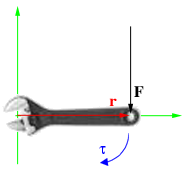Taking their Turkish name, 'fener', from ancient Alexandria's Pharos, one of the Seven Wonders of the World, lighthouses are the sailor's faithful friend.
For centuries mariners have found their way by looking at the stars. For them the tiny rays stars transmit are as important as their actual position in the sky. Over time however light sources illuminating the sea from land became mariners' guides, safeguarding especially navigators sailing close to shore from disaster. Developing technology has of course gradually reduced the need for such guides today. Yes, we are talking about lighthouses. Those white towers which while sustaining an, albeit nostalgic, existence are regarded today as an historic legacy in many parts of the world.
8334 KM, 415 LIGHTHOUSES
The first known lighthouse was built by the Phoenicians at Sigeon (today's Çanakkale-Kumkale) in the 7th century B.C. The lighthouse at Alexandria, one of the most imposing structures of antiquity, was built by Sostrates of Cnidus on the island of Pharos in 280 B.C.From Sinop-Inceburun in the north to Anamur in the south, there are 415 lighthouses of varying size along Turkey's 8334 km coastline, which extends from Igneada to Hopa on the Black Sea, and from Çanakkale-Seddülbahir on the Dardanelles to Hatay-Akinciburnu on the Mediterranean. According to the sources, construction of the first modern lighthouse in Turkey followed a serious maritime accident at the entrance to the Bosphorus at Istanbul, when a galleon, under the command of Haci Kaptan and carrying commercial goods to Egypt, ran aground in the night at Kumkapi in 1755. No sooner did the reigning sultan, Osman II, hear of the disaster than he instructed the Admiral of the Ottoman Fleet, Süleyman Pasha, to have the first lighthouse built in Istanbul's Ahirkapi quarter.
































































































.jpg)


















































































































